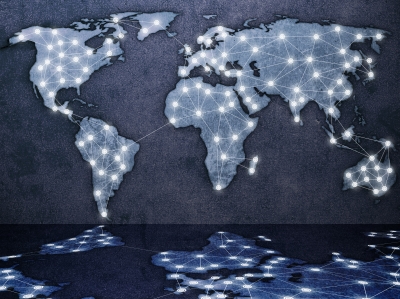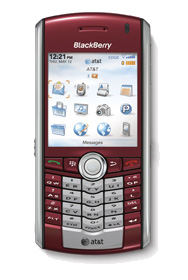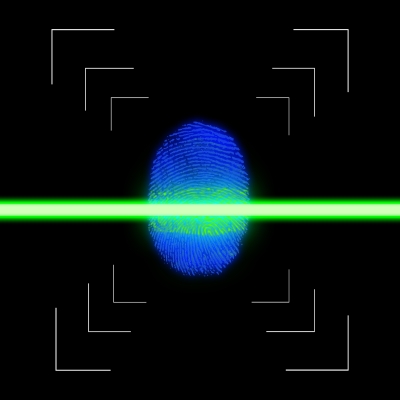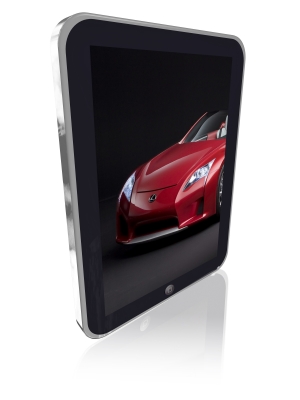-
- 25
Feb - (0)
What happened to Innovation?
I like new gizmos. I think most of us do, evidenced by the rocketing success of the Apples’ iPod, iPhone, and iPad.

These American products are taking over the world. Unfortunately, in medical technology, the trend is putting us behind the worldwide curve for the availability of innovative and exciting medical gizmos and medical technology in general. Price Waterhouse Cooper says this is a product of good, old-fashioned capitalism. American companies are seeking worldwide for medical solutions that can be marketed quickly and effectively. The fear of releasing products that are not approved by a government agency makes it hard for companies to market medical technologies.
Naturally, we’ll get the goodies eventually, and American professionals can be the last ones to get new technology, so American consumers could be the last to benefit from innovative gizmos and technology. It seems the increasing wealth in emerging nations and Europe is enabling these markets to pay the freight for the cool stuff.
Why is this so?
It’s simple, really. There’s a long history of medical technology being released in this country with negative effects, Medications like Ephedra (a base chemical for crystal methamphetamine, or speed) and Avandia for treating diabetes have their troubles, and Americans are frightened. Medication side effects, X-Ray or other electronic emission exposure, and gizmos manufactured and marketed with flaws have led to government intervention and a hyper-vigilant attitude toward medical innovation. This leads to more testing and a slower release curve, which looses time that can instead be spent marketing the product in other countries. Evidently, the rest of the world is not as careful (fearful?) of things going wrong as Americans are.
Combine this with the idea that the rest of the world is getting rich enough to afford new medical technology, and it’s easy to understand why the rest of the world is getting access to gizmos and medications before us.
In mental health and addictions, gizmos may be less of a factor than with other health concerns, like deteriorated knees that can now be replaced with artificials, however consumers can still benefit from technology, mostly in the area of diagnosis, like with brain scans.
It’s hard to tell what other technology can benefit mental health and addictions treatment when we aren’t clairvoyant, and still, it’s on the way. I guess the point of this meandering discussion is that as Americans, if we’re seeking a new solution to our mental health or addiction problems, technology may be on the way, however, in order to use it, we may need to take a European vacation. Provided we could overcome the fear of side effects and make the bold move to seek offshore solutions, the manufacturer of the gizmo would be happy, and we might end up with improved mental health.
This brings another factor to light…will insurance cover solutions a consumer seeks outside the United States, like use of a gizmo to bombard some brain malfunction that leads to depression or anxiety with newly discovered, healing electronic emissions? I bet they’d want to wait till the item was approved by the government for use in the United States (by the way, I made up this example).
If you’re intrigued about the prospect of an offshore solution to a mental health problem, keep your eyes open and keep surfing the web for new, innovative technology that’s becoming available elsewhere in the world. It’s a good idea to know what we’re getting into when we make bold moves, so check with your insurance company to understand who’s paying the bill, and understand possible side effects of any new treatment.
Read more → - 25
-
- 22
Feb - (0)
SmartPhones In Addiction Treatment
I hope I have been proven wrong…
Recently I looked into SmartPhones in medical use, and commented that I felt the applications were not ready for prime time, and that I hoped that somebody could prove me wrong as to the reason why: security. If it was me, I’d want effective security that my communications over the SmartPhone were going to the person I directed them to, and would not be intercepted by somebody else.

Well, the proof hasn’t come to me yet, and I must share that it may be on the way in the form of ACHESS a SmartPhone app for alcoholism and addiction treatment. A study is under way for ACHESS that will test its features from “panic buttons” to GPS locators helping consumers get peer and professional support when they are experiencing cravings or have wandered into the wrong place to stay clean and sober.
ACHESS, or Addiction CHESS, is being tested in the field right now, and we’ll know the outcome in a few months.
I like the ideas that form the foundation of the app and how it’s used.
- • When a consumer feels a craving to use, or her sobriety is jeopardized, hit the “panic button” in the app and you can be connected to somebody who can help overcome that craving
- • If a consumer has a tendency to drift into “old playpens” to connect with “old playmates” and abandon sobriety, the GPS tracking can help peers or professionals offer relapse intervention, simply because they know the habits of the consumer and locations of past usage of alcohol and substances
- • When somebody new to sobriety doesn’t know what “tool” to use (phone call, breathing, mindfulness, prayer, etc), the consumer can consult the app for an effective way to overcome dangers to sobriety
- • An approach to presenting tools tailored to the consumer instead of a “one size fits all” can improve the effectiveness of the treatment and encourage consumers to make choices for sobriety
Still, I wonder about security. I reviewed the ACHESS web site, discovering that current iterations of the product are primarily for the home computer, for which SSL and a few quite good security solutions like Citrix are about as effective as you’re going to get. The problem with the SmartPhone is that it’s wireless, and if your messages go out into the ether without some sort of scrambling called encryption, there is a high likelihood they could be intercepted. Addiction treatment has long been concerned with protecting the identity and treatment records of consumers in treatment, and that’s not about to change.
I looked, I called, and I Emailed, and still have no answer to this concern…then again, the test is just beginning, and the answer to that question is forthcoming.
…more to come.
Read more → - 22
-
- 26
Jan - (0)
Text–Nology
I admit it. I text. Almost everybody does these days.
Texting on your Smartphone is not a far cry from a professional in a behavioral health hospital or outpatient addiction treatment center keeping notes or other treatment documentation on the device. In fact, companies like New Mexico Software are developing medical record solutions for these devices at a record pace. I thought I’d investigate products that have been sold to professionals, are effectively being used and proven in the field.

I prefer the thumb-driven phone keyboard as opposed to the touch screen, probably because I’m used to it, and don’t want to get used to the new device. I’ve actually improved to the point that I can write a pretty detailed Email with fair speed. This gives me hope that using the small-screen environment to do real work is not just a pipe dream. Somewhere, it’s already happening, I’m sure professionals are writing their notes on their devices and somehow getting the note transferred from their phone to the Electronic Health Record (EHR) resident on the server of the agency they work for.
This prompts me to immediate suspicion…consumer confidentiality is a huge issue in our business, and I asked myself if HIPAA rules were being broken with this technology strategy? HIPAA is a rule that protects privacy of health information and is enforced by the US Office for Civil Rights.
I became quite frustrated looking into possible SmartPhone solutions, I found nothing conclusive. I ran across so many open ended arguments about the iPhone and iPad’s HIPAA security compliance, I decided to concentrate on the one I use, the BlackBerry. I ran across a fair source for the basics in the HIPAA Compliance Journal. Since Email is the foundation of electronic data transfer in the mobile environment, it seems a logical place to start exploring to determine whether the Smartphone is a secure enough device on which to keep or share consumer information. First of all, there may be no way to assure outgoing Email from a BlackBerry will remain secure, especially if it is forwarded to other treatment team members or to the consumer. Consumer information that’s quoted in Email is probably breaking HIPAA rules. This means the IT staff needs to be very savvy in order to assure the information makes it to the EHR without having to pass through public air space in an unsecured state if this technology is to be used.
The simplest thing to do is assure the entire Blackberry mobile network is set up in a secure fashion, to avoid insecure transmissions of data. This is just a matter of configuring the Blackberry with the Secure IMAP selection.
So, you say, that’s Email…what about documents like progress notes written on the Smartphone?
In a general sense, many mental health EHR software manufacturers offer mobile solutions. These are usually a service available on the Internet instead of software that’s installed on a mobile device, and come with secure methods of access. Using the software could be as simple for the user as launching an Internet browser on a Smartphone. The problem comes in with real estate. The Smartphone’s screen is too small for most professionals to find the environment effective to do any real work in the program.
Unless there is an App, a special, small program that installs on the Smartphone to deliver a screen that’s limited enough to perform a practical task like writing a note. I’m not aware of companies who have this capability up and running as part of their product, and would really like review the feature/functionality. Companies like New Mexico Software (above) are working on that.
So, if a mental health or addiction treatment professional wants this capability, it may come down either waiting for technology to catch up, or selling the idea to the folks they work for to develop it, simply because it falls into the bucket of software out there that’s “not ready for prime time” Hope somebody proves me wrong.
Oh, and about texting patient information? Make sure you have a secure environment that meets the HIPAA rule if you’re doing this.
Read more → - 26
-
- 23
Jan - (0)
Epidemic Treatment
Addiction to opiates is in epidemic proportions in many areas of the country. In Suffolk County, NY, it’s become so high-profile that the county launched an opiate epidemic advisory council seeking community help. Folks from all over the county have offered energy to help the community recover from this societal disease.

There are a number of methods of treatment, including 12 step groups, psychotherapy, hospitalization, and methadone, buprenorphine or suboxone for people requiring ongoing medication to overcome opiate abuse. I have worked with many methadone clinics over the years, and was happy to see that a number of clinics are working to improve their businesses…with the projected increases in people who need treatment, this improvement is vital.
According to NIATX, a group that helps mental health and addiction treatment organizations with their businesses, efforts have been successful in helping methadone clinics increase their capabilities to serve more people with opiate addiction problems. I was also glad to see that the solutions to making more widespread treatment available are served and improved by the Electronic Health Record (EHR).
Referrals Who knows who’s having trouble with opiates and is having difficulty recovering better than people in methadone treatment? Rewards were offered to consumers when they brought new folks needing help through the door. The program was effective enough to increase admissions at one agency by 53%. That sort of growth could create a minor problem: How do we track who brought whom through the door, and the rewards owed or delivered? A simple referral module in the EHR does the trick. After the fact, built in report writers can help evaluate long-term retention in treatment for people involved in this referral program…and save a lot of man-hours that might have been spent counting beans. Manual tracking of programs like this is seldom analyzed to determine effectiveness just because people are busy with their regular jobs and view analysis as busywork. Using computers to do that job makes sense.
Therapy Group In a number of states, Medicaid has switched to charging for each service delivered as opposed to a traditional method of a single fee that includes all counseling, medication or other services when a consumer walks through the door. Clinics are finding they need to offer different and separate types of treatment services, including group treatment. Groups require a two part note documenting both group focus and consumer focus, as well as scheduling to create a roster…a roster in the EHR saves time, increases accuracy of attendance and billing accounting. The note assures the team will know of emergent issues for consumers and assures they get more individual help if needed…not to mention fulfilling billing requirements. Another benefit of the EHR in this instance is the focus of the group; analyzing group notes can point out needs for therapy groups that focus on different topics.
Immediate Service The EHR can help manage inquiries by people needing help, including a quick scheduling for the consumer to talk with a counselor. The disease of addiction can make people rather impatient, so the quicker the service, the better. Central scheduling enables scheduling of appointments in the next empty time slot that works for both the consumer and a counselor. Without that up-to-the minute management capability, connecting the two can be difficult.
With opiate addiction in epidemic proportions, it only makes sense to help professionals deliver the highest quality care to the most people. Optimizing use of the EHR is a vital tool in serving more people in your neighborhood who might have a problem with medications like oxycontin or Vicodin, or street drugs like heroin.
Read more → - 23
-
- 16
Jan - (0)
Consumer ID
I remember odd stories of people being referred to professionals and treated for conditions they didn’t have because they were mistaken to be somebody else with an entirely different problem. Wrong medications can be delivered or professionals can act under false assumptions when working with the consumer. Confusion like this can be avoided with positive identification methods available to the Electronic Health Record (EHR).

A little over a year ago, Rand Corporation said that the Unique Patient Identifier would cost $11 billion, and pay off nationwide in reducing these sorts of medical errors, and in simplifying the nationwide effectiveness of the Electronic Health Record (EHR), which in turn can introduce a high level of efficiency, and a way to enforce patient privacy. Thank you, Rand. In the EHR manufacturing world, we’ve been selling these ideas for many years. Hopefully Rand and other high-profile companies will help make the nationwide Unique Patient Identifier a reality.
One important result of the nationwide Unique Patient Identifier for consumers would be patient confidentially, or so we’ve said for over a decade. Patients deserve to have control over who knows their mental health diagnosis or any information about their stay in an addiction treatment center. Typically, we’ve accepted we will be identified by a number, so what number do we use? The Veteran’s Administration uses the social security number, identifying VA Hospital patients by last name and the last 4 digits of their SSAN. I don’t know if that’s good or bad, but it certainly seems effective.
Occasionally we hear of breaches in confidentiality like the loss of a Veteran’s Administration laptop in May of 2007 with a gazillion veteran’s names and numbers on it…like social security numbers. That single event woke me up to how important it is for me to maintain the confidentiality of that particular number.
Let’s use my old pal Kenny as an example of how this “secret” and private number has been spread around. Who has Kenny’s social security number? Oh, everybody, it seems.
- Social Security Administration
- Internal Revenue Service
- Chase Manhattan, Bank of America, and every other lending institution Kenny’s done business with
- Verizon (there’s a mistake)
- Allstate, GEICO and every other insurance company he’s done business with
- Brookhaven, New York Presbyterian, and Ashland Community Hospital in Oregon, plus any other hospital that’s treated Kenny
- Dentists, optometrists, and other specialists from coast to coast
- Landlords, ex spouses and kids
In short, that secret number isn’t very secret, but it’s the closest thing that we have to an identifier. In my book, it’s time to abandon the idea of the social security number as a single identifier…it’s too compromised.
The solution for me seems to be technical. What’s done is done, and Kenny can’t do much about it. Perhaps you can. You don’t have to share your social security number with anybody…Verizon and the banks might argue about that, but it’s a law. These companies may not let you use their services and products as a result. No phone and no mortgage could be an inconvenience.
Signature pads have been in use for many years to validate consumer identity. A common software technology ties the signature to a patient ID. If consumer data needs to be shared with others, the patient signs for it, validating his Unique Patient Identifier. This assures the consumer is in control of who sees what. Without the signature, these entities who have your information can’t share it, and if they do, they are at great risk. Somebody could be open for a law suit or jail.
Voice technology, face identification, and retinal scans are a few other methods that can be used to validate Kenny is who he says he is, which is handy in the case of identity theft. Most of the organizations like credit bureaus and medical providers (probably your friendly neighborhood Community Mental Health Clinic) simply pair the SSAN with the date of birth, name and/or address, which is simple. Is that secure enough for you?
A solid, durable signature pad costs around $200 (the $100 model wears out quickly in a production environment and the $400 model with LED screens and interactive technology may be overkill). The other solutions cost a bit more, but so what? Technology is a pretty reasonable solution to assure nobody else is using a consumer’s ID, and confusing a person’s diagnoses and treatment with somebody else or spreading it across town or across the country without that person’s permission.
The simple point is, when it comes to treatment, maintaining confidentiality is tough and getting tougher as the National Health Record becomes a reality, and in the end, every citizen needs to take responsibility for the security of his ID. Keep your eyes and ears open, campers!
Read more → - 16
-
- 05
Jan - (0)
Remember Voice Technology?
Years ago, while vice president of a small Electronic Health Record company, the dream of speaking into a microphone and having progress notes magically type themselves came up in every presentation, and the answer was similar to today’s answer: “That’s not part of the product, and it’s very possible using a product like Kurzweil Speech Recognition software”. We considered integrating speech recognition into our product.

Even back then, it worked great once you got it set up. The software needed to know your speech patterns, your voice and such. Any idiosyncrasies brought into the mix like dentistry or an injured tongue or a strong accent really threw the software for a loop. Like I said, the software worked fine, it was the setup and changing patterns of our voices that could throw a monkey wrench in the works. Consequently, speech recognition software was seldom used…Oh, I almost forgot, you could have bought our company for what the voice technology cost, so we declined to integrate the product.
The technology is much better now, and still in our field, seldom used. There are a number of high quality systems on the market that are available for a reasonable cost, like Dragon software, (and I imagine Kurzweil, too). You don’t have to go far for examples of how the technology has advanced. Most automated telephone systems with voice recognition do a good job, and the system that bowls me over is the Long Island Railroad system at 718-217-5477. Sometimes on a cell phone under less-than-optimal conditions, you might need to wait a while the system “thinks” about your response, but it picks up from that point well. Voice technology seems to no longer need much coaching or training to deliver what ‘s needed.
In mental health and substance abuse facilities, people ask about this technology for the benefit of those who don’t type. I learned to type in high school. I was a healthy boy and that’s where the girls were. I liked being there and over the years typing became a stream-of consciousness phenomenon. I don’t touch a writing implement often these days. My suggestion throughout the years has been to learn how to type if the effort and price tag is too high for voice technology. In this age of texting, select boxes, templates and drop-down dictionaries, that opinion has to go. The technology seems to have arrived, and by purchasing Voice Technology software for a PC, speaking notes and having them automatically type into memo fields us usually a snap.
Traditionally doctors have been the ones who used voice technology, historically that means Dictaphones. Today, it means software like those mentioned above. Most EHR software will accept input from the software. As I understand, the computer changes the voice input into typed characters, and they look like standard keyboard input to most software when your cursor is focused on a memo field.
It’s only rocket science, and we’ve been doing that since the Chinese invented fireworks rockets, long, long ago.
Once a doctor or other mental health professional uses the software, the text will still need to be edited, since we don’t write like we talk…not a big deal once we get the hang of using it, and that usually means the person using the software has to do the editing. This eliminates the drudgery and expense of having somebody listening to the recorded message and type the notes into the EHR.
Call me old-fashioned. I like to type. If you know professionals who don’t, suggest they look into voice technology; it’s a new world.
Read more → - 05
-
- 27
Dec - (0)
2011 – Everything Changes
Change is good. All the folks I work with will experience big changes in 2011.
 ARRA, the American Recovery and Reinvestment Act that has been a cornerstone of the Obama administration in pumping dollars into the economy will affect mental health and substance abuse treatment for both consumers and professionals in the upcoming year. $19 Billion has been set aside for Healthcare Technology and a good portion of that will be fed into organizations in the form of Medicare and Medicaid incentives for using the Electronic Health Record (EHR). Large agencies have been banking on this and buying EHR software in 2010, hoping that legislation that has been moving through the political system will pay either $44,000 or $63,750 for each doctor / prescriber using the EHR.
A number of healthcare providers are now in a race to implement the EHR and qualify for the big bucks. They will need to meet 15 core measures of performance with their EHR, so folks just now implementing software will need to hustle through the implementation and prove they meet specific functionality, or the money doesn’t come. They have until September to have all the 15 elements in place if they want to collect incentives in 2011.
ARRA, the American Recovery and Reinvestment Act that has been a cornerstone of the Obama administration in pumping dollars into the economy will affect mental health and substance abuse treatment for both consumers and professionals in the upcoming year. $19 Billion has been set aside for Healthcare Technology and a good portion of that will be fed into organizations in the form of Medicare and Medicaid incentives for using the Electronic Health Record (EHR). Large agencies have been banking on this and buying EHR software in 2010, hoping that legislation that has been moving through the political system will pay either $44,000 or $63,750 for each doctor / prescriber using the EHR.
A number of healthcare providers are now in a race to implement the EHR and qualify for the big bucks. They will need to meet 15 core measures of performance with their EHR, so folks just now implementing software will need to hustle through the implementation and prove they meet specific functionality, or the money doesn’t come. They have until September to have all the 15 elements in place if they want to collect incentives in 2011.ARRA is forcing significant change in the way professionals work and consumers receive treatment. Some professionals are struggling with central scheduling, having to turn over control of their schedules to somebody else in order to serve more consumers. Consumers who have been accustomed to being able to drop-in for treatment are being encouraged to make appointments, and sometimes need to wait longer to see a professional if they do drop-in to their friendly neighborhood community mental health center to discuss an emerging problem.
In 2011, more consumers will see treatment documentation first hand, some for the first time, becoming involved in developing their own treatment plan. The professionals and consumers are working together more and more often to organize their discussions into focused efforts to (1) address items in the treatment plan or include new problems in that plan to address (2) write the progress note to summarize the discussion from the perspective of both the professional and the consumer, and (3) plan next steps for treatment. The elements of this interaction are not new, however some professionals have kept them behind the scenes, and the transparency of the EHR is forcing them out into the open. Funding that includes documentation in the price of a session is forcing use of the EHR; documenting on paper is just too cumbersome and inhibits the effectiveness and speed of audits from Medicaid, accrediting bodies and internal quality control people.
But wait, there’s more change in 2011!
January 3rd, New York OASAS licensed substance abuse treatment organizations follow a number of other states in moving from “threshold billing” (one charge per day pays for all that day’s treatment), to “APG” billing (a fee charged for each service provided, under extremely complicated rules). This is a huge change for professionals and consumers. I work with an organization that plans to continue using a paper record and another that is committed to electronic treatment documentation. The major difference between the two methods is tracking the services for billing purposes. Connecting a billing record to the treatment documentation is easier to follow with the EHR. Both clinics have fine professionals treating the patients, and the consumers get what they need. The paper record is simply more of a hassle.
So, you see, the conspiracy to move to the EHR is in full swing. In 2011, some of the changes forced by the EHR may leave a bad taste in some mouths. On the other hand, it helps pay the bills.
Read more → - 27
-
- 21
Dec - (0)
Mobile Healthcare
A few years ago, I worked with a behavioral health hospital in Rhode Island to improve their Electronic Health Record (EHR), and the thing that impressed me the most was staff acceptance of carrying wireless laptops around the ward as they were treating consumers. They were constantly connected to the EHR, and this design not only encouraged, but enforced collaborative documentation of services with the consumers.

According to Ken Congdon, editor in chief of Healthcare Technology Online, there has been a resurgence of interest in this sort of technology, adapted to the iPad. Congdon speaks from a physical health perspective, and perhaps I can add to his research angled toward mental health and addiction treatment.
I approve of the iPad. PC guys like me and the Apple brigade have kidded each other about which is better, and a lot of us PC guys are starting to see real value in Apple’s products.
I’ve gone on the record many times as a supporter of collaborative documentation, and this technology makes that sort of treatment planning and documentation easer. The keyboard is as good as non-existent, so drop down dictionaries, checkboxes and radio (yes/no) buttons are pretty much a requirement for documentation. That speeds up the process while keeping the consumer involved…plus, who doesn’t like a gadget? Most consumers would at least be curious about the using the iPad. Imagine how easy it would be to assure a note addressed a treatment plan item by handing the iPad to the consumer and covering that first thing in a session. Then you’d have the bulk of your session (when the real work happens) without touching the little computer. After the discussion, the professional and consumer would summarize and record the next steps on the iPad, especially if the software has been creatively modified to suit this process. I think a number of consumers’ curiosity would help move this technology into the mainstream and improve the documentation, involvement and possibly treatment.
The Information Technology (IT) department or project manager for the agency’s EHR would need to turn attention to the way documentation is used, modifying some screens and better fitting them to work with the iPad. Since the trend is toward developing software to work in an Internet browser, tools that bridge the gap between the Microsoft and Apple technologies are already available.The project is certainly worth looking into.
Mental health professionals have been slow to adopt the EHR, and by tackling software design and implementation projects like this, the EHR’s acceptance by those same professionals might come along more quickly.
The technology does raise some concerns. Security needs to be a priority. Any time wireless technology is used, the passwords and firewalls need to be in tip-top shape. That’s not a problem, IT departments specialize in this, and if they need help, there are plenty of security experts and lots of security training in the world today as a result of hackers and virus attacks.
When a professional uses primarily data dictionaries, check boxes and radio buttons to complete an assessment, treatment plan or progress note, there is a very real danger of cookie-cutter documentation. For auditors, this approach to documentation is a hot-button and alerts them to review it very carefully with this regard. Again, this has been resolved by many software companies serving mental health and addictions (let me know if you want some suggestions for companies who have creative solutions). The note could be set up with a required “append” function that would alert professionals to add some narrative once they get back to their desk. Not a big deal, just an opportunity to be creative.
Once again, technology makes the world a more interesting, if not brighter, place.
Read more → - 21
-
- 18
Dec - (0)
- 18
-
- 13
Dec - (0)
Worlds are Colliding
It’s an old saying, “You don’t go to the hardware store for a loaf of bread!” When it comes to mental health and substance abuse treatment, it seems that’s what people are doing…and that complicates the business behind treatment.

I reviewed a presentation by Laurie Alexander, a peer in the behavioral health consulting world, and Karl Wilson of Crider Health Center, and was surprised to discover that when people seek mental health or substance abuse services, the first place they go is to their primary care provider. Upon consideration, I guess it makes sense, simply because we’re all connected, body, mind and spirit. Difficulty could enter the equation when the consumer may get a prescription without qualified, licensed counseling, and in this age of mergers and acquisitions and forging of business partnerships, that problem is being resolved.
Relating this to technology is not a reach. Mental and physical health software systems may have the same goal (to document health problems and solutions), however the way they work are tremendously different. At least one software program rooted in hospital-based, physical healthcare has tried to include feature-functionality for our sector. According to the customers I have met in my work, they had a tough time developing the software and never really got that part of the product off the ground, simply because they lack experience in the different way of documenting mental health and substance abuse services. The workflows are quite different for mental and physical health treatment.
Physical health software concentrates on a limited number of types solutions for health problems. Documentation tends to include electronic results from X-Ray, lab, MRI and other machines that are created automatically from the machine’s results. Other elements are fairly predictable, using a lot of check-boxes and very little narrative. Documentation of physical healthcare has grown into a pretty simple documentation solution for that Electronic Health Record (EHR).
Mental health /substance abuse software tends to focus on assessments that are developed in an agency and may or may not be suited to a bundle of check-boxes and drop-down elements for the sake of measuring outcomes. Treatment plans that consist of a series of problems, goals and objectives, and progress notes with a lot of narrative leave mental health and substance abuse treatment professionals forever writing. For decades software developers have tried to come up with a simple (EHR) that serves these needs, and have found that an important key to successfully implementing software is to suit the customer’s workflow patterns. This has been a trial. We are finding that staff transience among agencies and other factors are leading to a more homogeneous solution, seeing the same software features in many of the mental health/ substance abuse treatment EHRs on the market
Once I went to the CEO of a software company I worked for with an idea to include physical health documentation in the mental health software. He’d spent over 25 years building software specific to our sector. He chuckled at the idea saying, “We can’t even spell what they want to track!” In other words, it wasn’t the software’s core competency and including physical health features, while possible, was not advisable simply because the company didn’t have the rich experience in physical healthcare—it was a different world to us.
It’s true that physical health and mental health oriented software can both generally handle each other’s business, and the difficulty in crossing those lines is that the manufacturers just don’t have the widespread experience in all areas of their business to readily handle both worlds…yet. That experience is being gained now.
Because ½ of all mental health and substance abuse services are performed by physical health clinics, and because the trend in mental health is to have physical health professionals on staff, software is evolving, and companies in both business sectors are coming to know the other side of the coin. Electronic Health Records (EHRs) are getting better, including more functionality that’s sensitive to workflows both in physical health and mental health/substance abuse treatment.
Read more → - 13

